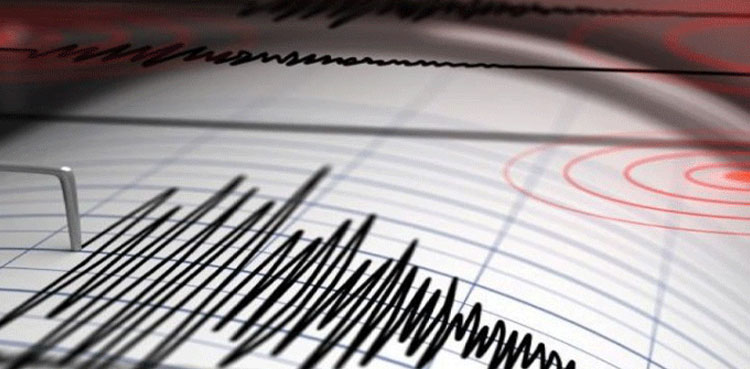ISLAMABAD: A 5.4-magnitude earthquake felt in parts of Khyber Pakhtunkhwa, Punjab, Azad Kashmir and federal capital Islamabad on Saturday.
The National Seismic Monitoring Centre (NSMC) confirmed that the 5.4-magnitude earthquake was recorded at 02:04AM PST at a depth of 102km, while its epicenter was in Hindukush Mountain region in Afghanistan.
Tremors were also felt in various areas of Afghanistan and Tajikistan, NSMC stated.
The quake jolted Peshawar and adjoining areas, Swat, Malakand, Nowshera, Charsadda, Karak, Dir, Mardan, Mohmand, Shangla, Hangu, Swabi, Haripur, and Abbottabad districts of Khyber Pakhtunkhwa.
Tremors were also felt in twin cities of Islamabad and Rawalpindi, Lahore, Attock, Taxila, Murree, Sialkot, Gujranwala, Gujrat, Sheikhupura, Ferozwala, Muridke and other parts of Punjab.
The earthquake also jolted Mirpur in Azad Kashmir and adjoining areas.
The quake caused panic and fear as people came out of their homes reciting the verses of the holly book.
However, no losses of life or property were reported.
Click Here to Read This Story in Urdu
Pakistan is considered one of the most seismically active countries in the world, situated in a region where the Indian and Eurasian tectonic plates collide. This collision zone makes the country highly vulnerable to violent earthquakes. Provinces such as Balochistan, Khyber Pakhtunkhwa, and Gilgit-Baltistan lie on the southern edge of the Eurasian plate, while Sindh, Punjab, and Azad Jammu & Kashmir provinces are located on the north-western edge of the Indian plate, contributing to frequent earthquake activity.
The country’s geography makes certain regions more prone to earthquakes, including:
– High-Risk Areas:
– Northwestern regions: Khyber Pakhtunkhwa, Gilgit-Baltistan, and Azad Kashmir due to their proximity to major fault lines like the Main Central Thrust.
– Balochistan: Located near the active boundary between the Arabian and Eurasian tectonic plates.
– Other Vulnerable Regions:
– Punjab: Lies on the north-western edge of the Indian plate, making it susceptible to seismic activity.
– Sindh: Though less prone, it’s still at risk due to its location on the Indian plate.
Some significant earthquakes in Pakistan’s history include the 2005 Kashmir earthquake (7.6 magnitude), which resulted in over 80,000 fatalities, and the 1945 Balochistan earthquake (8.1 magnitude), the largest earthquake in Pakistan’s history


Leave a Comment